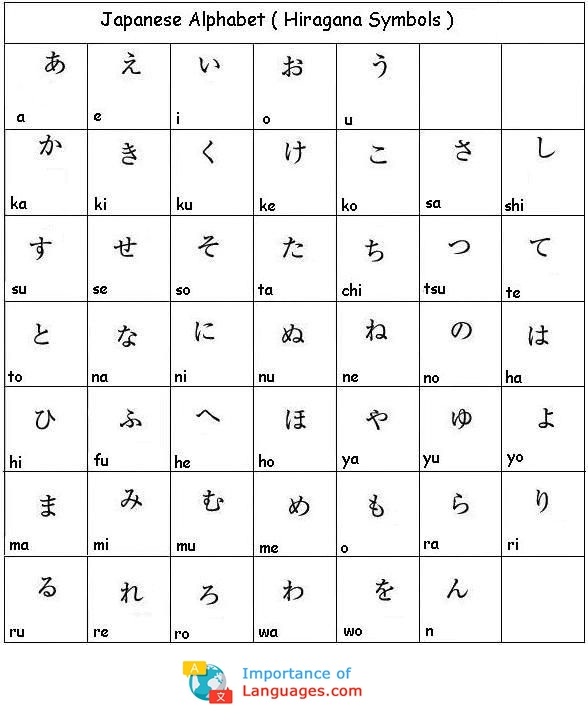Learning to read the Japanese Alphabet should be the first stop for Japanese beginners. Japanese has probably the most confusing alphabet system for beginners.
Learn Japanese Alphabet consists of 3 different Alphabets that are used in different circumstances or sometimes used together to form words and phrases.
Contents
Types of Japanese Alphabets
The Japanese alphabet is overall known as Kana, consisting of three alphabets:
- Hiragana
- Katakana
- Kanji.
The Japanese alphabet overall is [su_highlight]phonetic alphabet where each symbol is a spoken syllable that represents a single sound[/su_highlight].
Essentially every Japanese word is written exactly how they are pronounced.
Hiragana Alphabet
• Hiragana expresses the grammatical relationship between them (endings of adjectives and verbs)
• Hiragana is used to represent native Japanese words.
Japanese Alphabet Hiragana is a phonetic alphabet that contains 48 syllables that be sounded out to pronounce the word. Hiragana has characteristic cursive characters.

Katakana Alphabet
• Foreign names and words of foreign origin.
• Foreign places
• Words of Foreign origins.
Japanese Alphabet Katakana is also a syllabic alphabet. There are 48 Katakana symbols that have similar sounds to Hiragana.
It is no coincidence that there is the same number of characters in both the Hiragana and Katakana alphabets as they both represent exactly the same sounds (some of them even look quite similar).
Kanji Alphabet
There is a third form of Japanese Alphabet that borrows or modifies Chinese Characters called Kanji. Kanji was borrowed from Chinese writing at a time when there was no written Japanese language and it is still around. Japanese Kanji has different meanings than Chinese characters today.
There are over 8000 Kanji. Kanji are not syllabic and are used to represent abstract concepts as well as names and everyday words. An average adult Japanese speaker must know at least 2000 off by heart. Although you don’t need to memorizes all of the Kanji. Each Kanji has several different meanings and pronunciations.
Japanese words are pronounced exactly as the symbols show but one thing to pay attention to is if the character has a diacritic mark above it or not.
Make sure to practice pronouncing and writing the Japanese Alphabet whenever you can. As many times as you can.
Because Japanese has three different alphabets: Hiragana, Katakana, and Kanji. Hiragana and Katakana are pretty similar with roughly 48 symbols each( some used, some not. Hiragana is for general use while Katakana is used for foreign names, the names of foreign places and words of foreign origin. Kanji are characters that are burrowed or modified from Chinese. Japanese number system is a lot easier to learn.